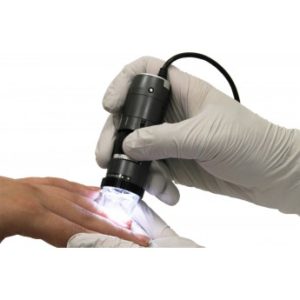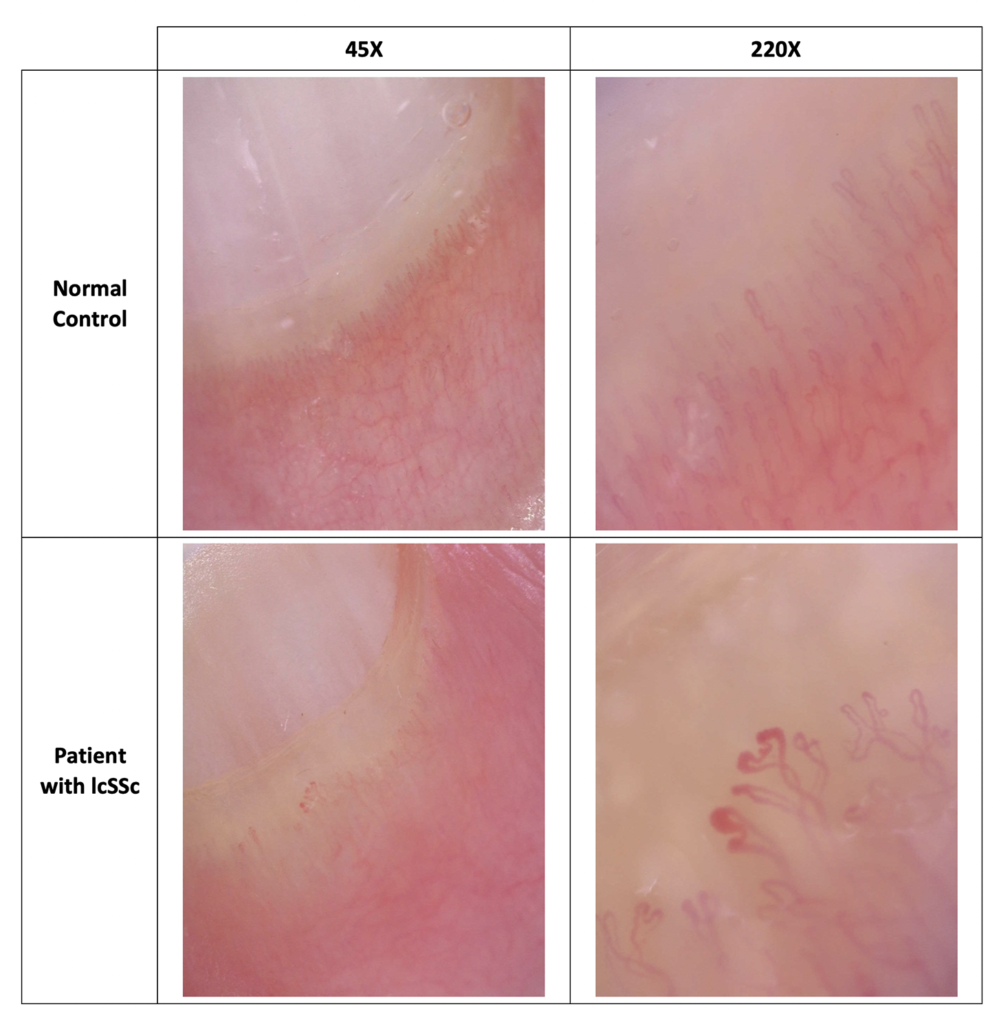 Diagnosis of systemic scleroderma can often be very challenging. Diagnosis is done by a combination of lab tests (ANA/antibodies) and clinical symptoms such as skin thickening, puffy hands, telangiectasias. Additional symptoms such as GI symptoms (e.g., GERD or difficulty swallowing) and tendon friction rubs are factored into the diagnosis equation as well. One of the most important diagnostic tools is nailfold capillary examination under medium to high magnification. As it turns out, since systemic scleroderma is a disease of the vascular system, nailfold capillaries are easily accessible visible indicators of disease existence and even severity level.
Diagnosis of systemic scleroderma can often be very challenging. Diagnosis is done by a combination of lab tests (ANA/antibodies) and clinical symptoms such as skin thickening, puffy hands, telangiectasias. Additional symptoms such as GI symptoms (e.g., GERD or difficulty swallowing) and tendon friction rubs are factored into the diagnosis equation as well. One of the most important diagnostic tools is nailfold capillary examination under medium to high magnification. As it turns out, since systemic scleroderma is a disease of the vascular system, nailfold capillaries are easily accessible visible indicators of disease existence and even severity level.
For reasons I won’t go into here, it is easiest to see nailfold capillaries in the little finger and ring finger of the non-dominant hand. If you are right handed, these would be the ones on your left hand. If left handed, your right hand would be the place to look. If you are fully ambidextrous, either hand would probably be similar, but I haven’t read about this in any of the research that I have reviewed of nailfold capillaroscopy.
While many clinicians, even non-scleroderma specialists, are aware of that nailfold capillary examinations can be a value part of diagnosis, in most cases, these clinicians will probably only have access to handheld viewing systems that would typically have magnification levels of 10x to 20x. This may be completely adequate to view abnormal capillaries in middle to later stages of the disease, but in very early stages of systemic scleroderma, you need magnification levels of about 200x to clearly see abnormal capillaries.
The table below shows examples of normal capillaries at about 45x and 220x magnification and also typical abnormal nailfold capillaries in a patient with limited systemic scleroderma (lcSSc). These images were left little finger nailfold capillaries (both the patient and normal control are right handed). The system used was a AM4115-N2UT Dino-Lite Edge handheld USB microscope. A drop of immersion oil was used to make the capillaries more visible.
Note: if your doctor indicates that the reason that they don’t have a system to do high magnification nailfold capillary examination is that they are way too expensive, this particular professional nailfold capillary viewing USB microscope costs $599. There are a number of professional USB capillary microscopes available from a number of different companies; some are even lower cost than this system.

Research indicates that you are most likely to see the earliest changes on the little and ring finger of the non-dominant hand. Later, you can see changes on all fingers. Note that if you have significant skin thickening on the fingers, you will often not be able to see the abnormal capillaries through the thickened skin.